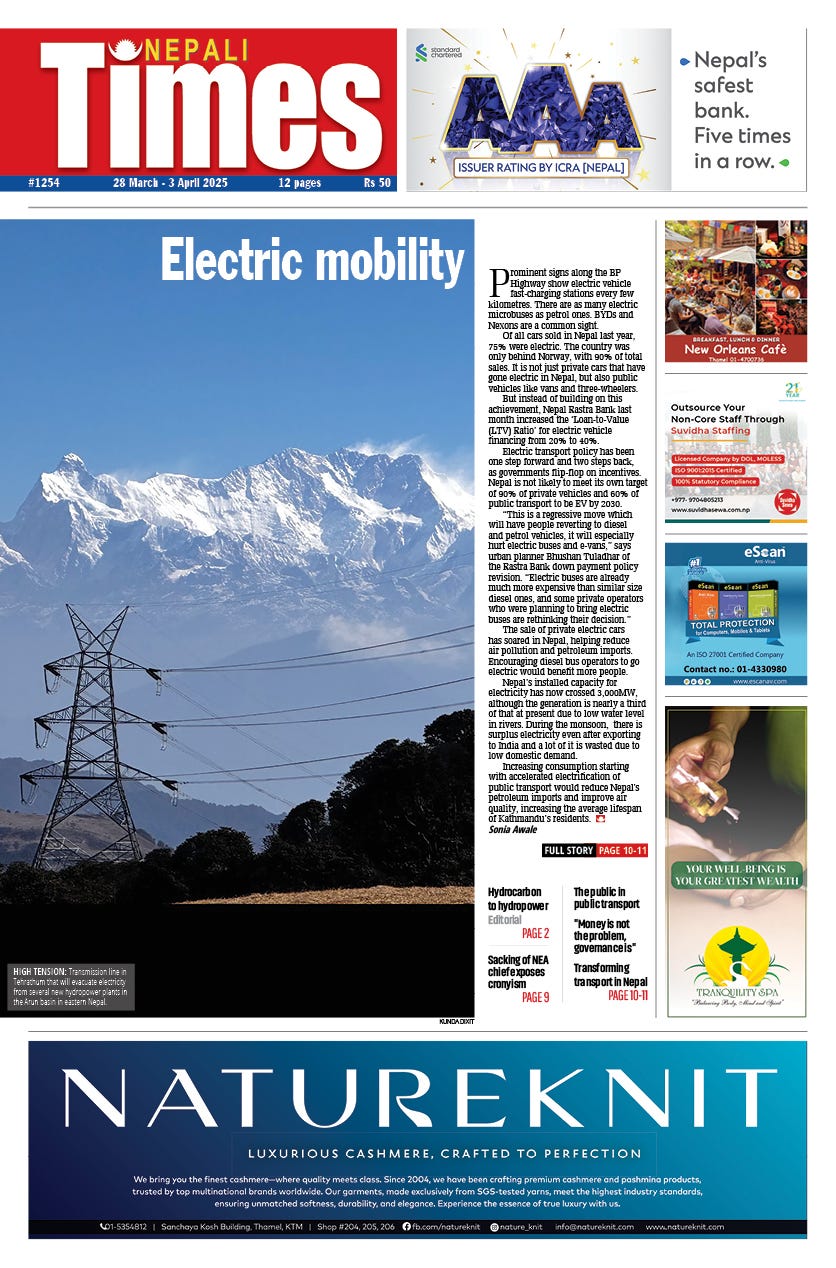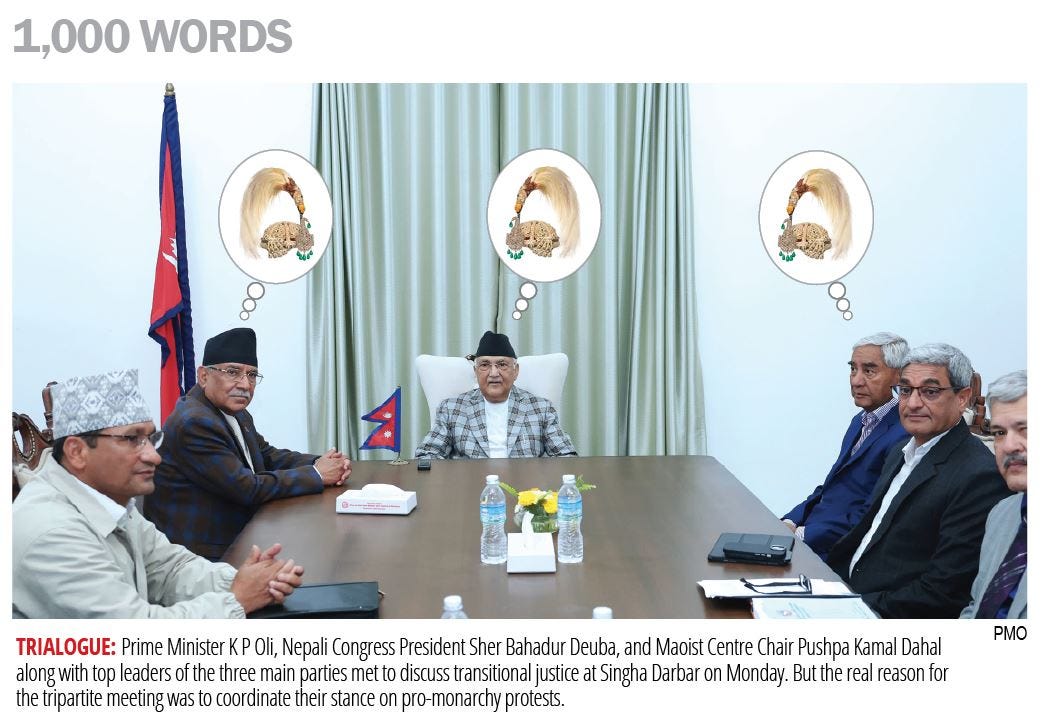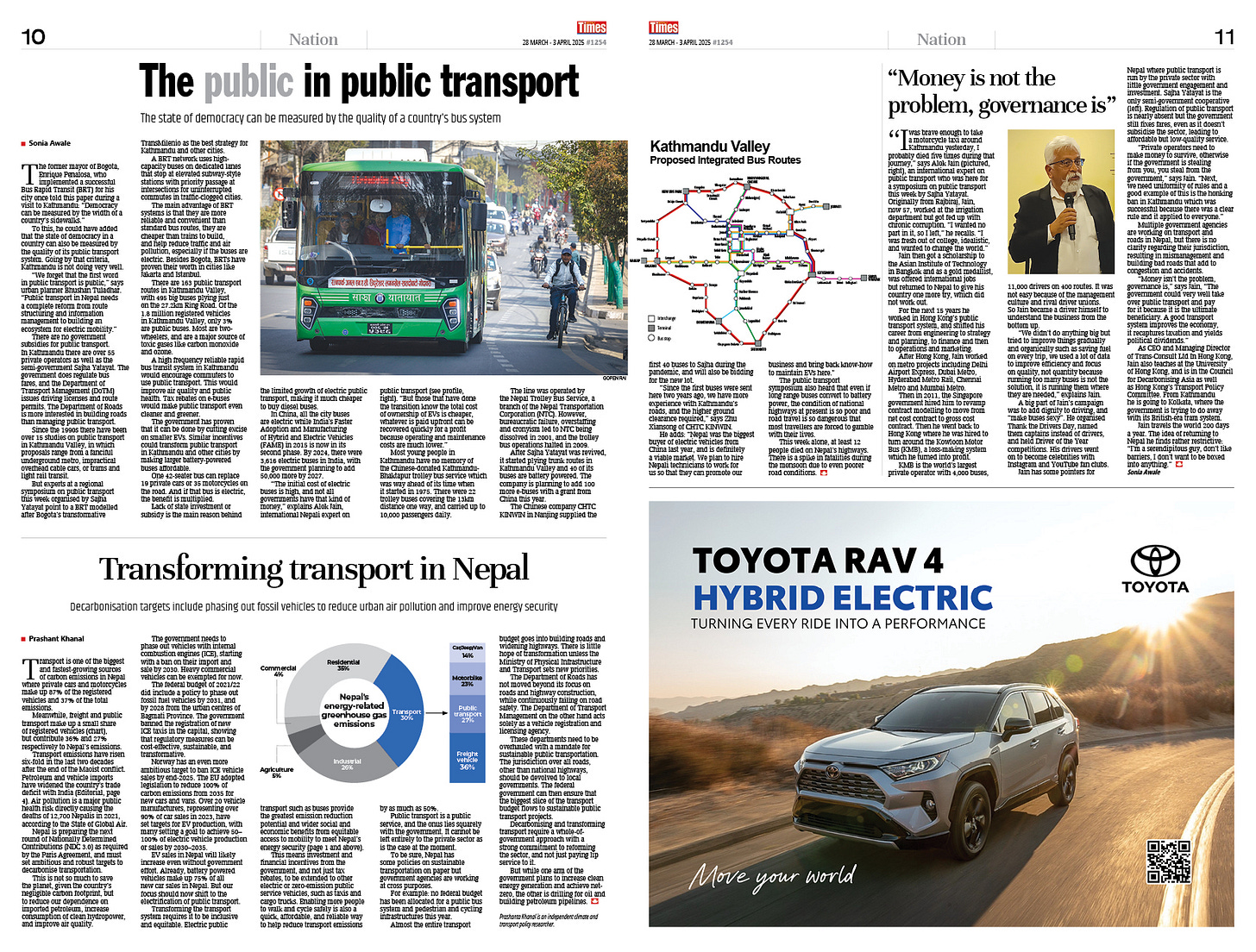It does not feel appropriate to recap the week with our usual light-hearted banter in this week's newsletter. Parts of Kathmandu are still picking up the pieces from the arson and looting of Black Friday, and there is a sense of dread about what is to come.
Read the Nepali Times coverage of the royalist rally at Tinkune on 28 March that went out of control after the leader of the demo tried to ram his pickup through a police cordon (Republicans and Royalists on Nepal’s Streets).
The monarchists accused riot police of shooting tear gas from the roof of an adjacent building, and set fire to it. Avenues TV journalist Suresh Rajak was killed in the blaze.
Demonstrators then attacked buildings housing media, party offices, set fire to a nearby pharmaceutical factory and ransacked a department store. In the ensuing melee one demonstrator died when police opened fire.
The two royalist RPP parties and their backers have been waging a campaign to restore Nepal as a Hindu state with Gyanendra Shah as king. While some Hindutva elements in India have supported this, royalists have calculated that public disillusionment with democracy has reached a peak and Nepalis are fed up with the system.
Indeed, a public opinion poll in January (Pulse of the People) showed that while most Nepalis felt they were better off than five years ago, they were overwhelmingly sick and tired of the three established parties that have ruled the country since the conflict ended 20 years ago. Sher Bahadur Deuba of the NC is a serial prime minister, he has headed the government five times since 1996. This is prime minister K P Oli’s third time in office and Maoist Pushpa Kamal Dahal has also been PM thrice.
These superannuated leaders should decipher the writing on the wall, or better still take a walk through Tinkune to see charred and shattered facades of buildings. Unless they give younger and untainted leaders within their ranks a chance they are doomed in the 2027 elections, or maybe even before that (Nepal’s Déjà Vu on Black Friday).
Nepal is now polarised between those who do not remember the years after the 2001 royal massacre under king Gyanendra and feel ‘anything is better than this’, and those who do and are convinced ‘anything is better than an absolute monarchy’.
Friday’s edition of Nepali Times came before the royalist riot, but there was a hint in Vishad Raj Onta’s analysis of the government’s sacking of the popular head of the NEA Kulman Ghising, which predicted that public anger could boil over (Sacking of NEA Chief Exposes Cornyism, page 9).
Much of the coverage this week is about energy. The Editorial on page 2 (Hydrocarbon to Hydropower) by Ramesh Kumar analyses why Nepal would benefit more by increasing domestic consumption of electricity rather than exporting it. And one way to do that, as Sonia Awale explains on page 1 continued on pages 10-11, would be more investment and tax rebates on electric public transport (Electrifying Mobility: The Public in Public Transport).
There are three analyses of recent Nepali cinema trends on page 6-7. Sophia L. Pandé reviews Deepak Rauniyar’s latest feature, Rajagunj (Powerful Movie Upacks Questions of Identity). Sangya Lamsal takes a look at the portrayal of women in Nepali cinema (She Is the Story) and Pratibha Tuladhar examines how the portrayal of men in movies shapes societal mores (The Tenderness in Men).
And lastly, hurry up and visit the exhibition of research into the ancient hiti water spouts of Kathmandu Valley at the Patan Museum. Today is the last day, but Sudhiksha Tuladhar has reviewed it for us on page 12 (‘Kathmandu’s Liquid Landscape’).
Take care.
Kunda Dixit






